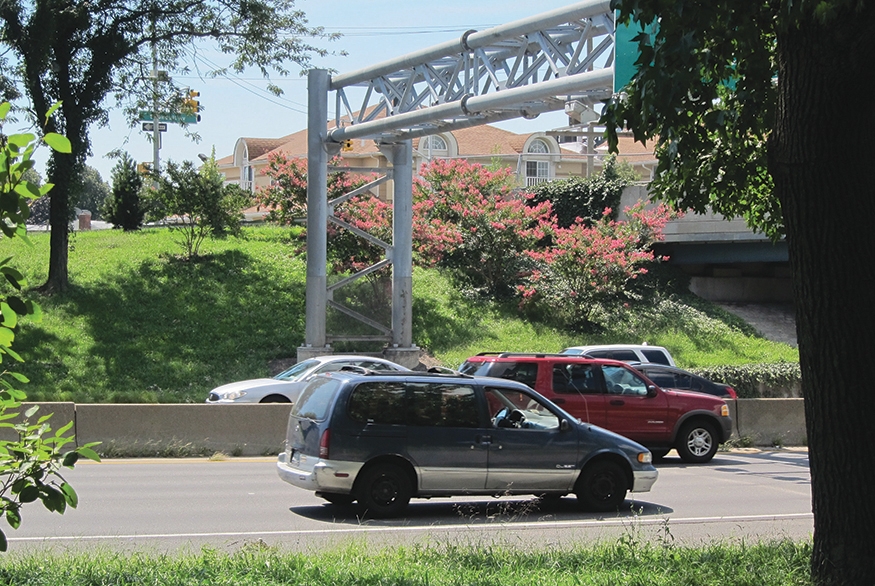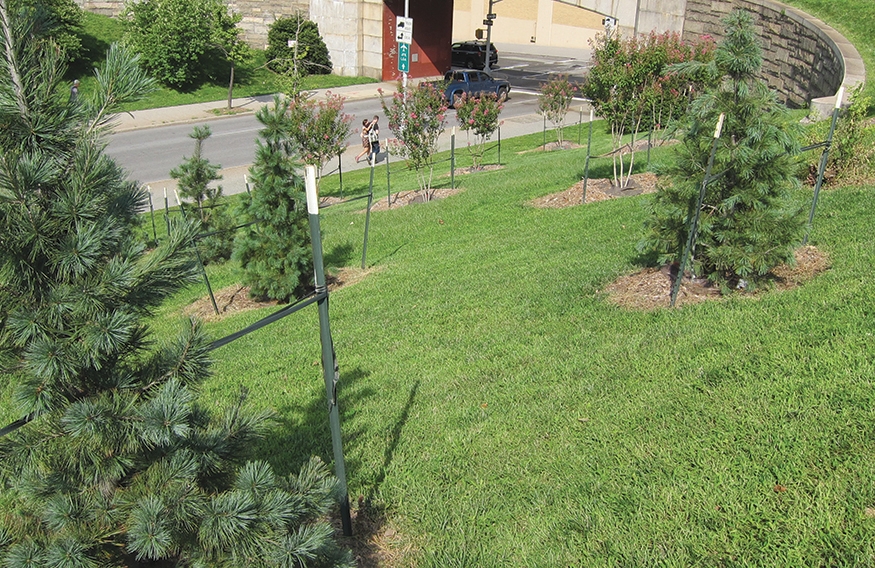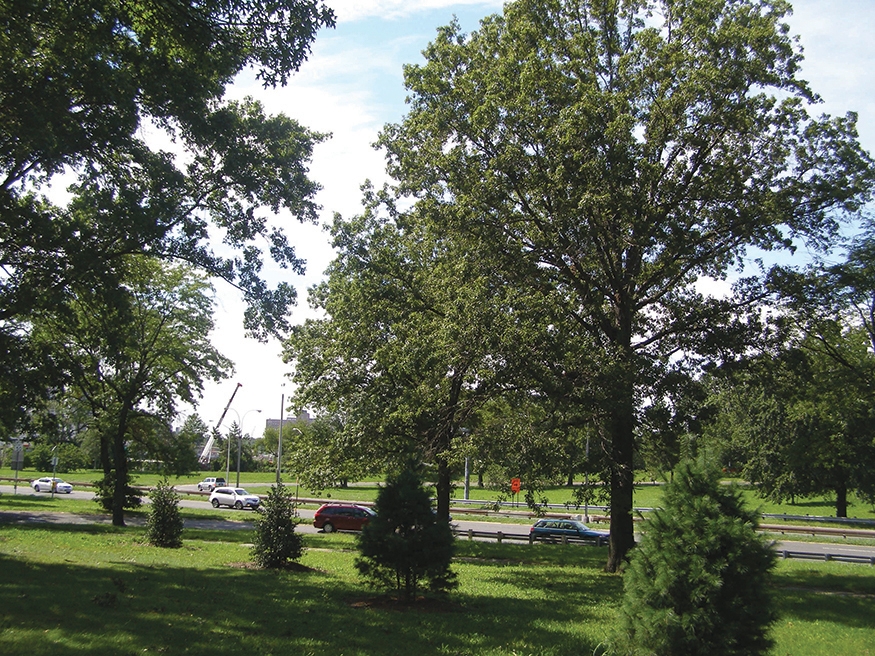Limited-access arterial highways are high-speed roadways, such as expressways or parkways, with access ramps, no intersections with traffic control, and generally large areas for plantings. The most commonly used ground cover for limited-access arterial highways is turf grass. Arterial lawns are mowed about four times during the growing season. No fertilizers or pesticides are used, and there is never supplemental irrigation after establishment.

Plantings along an access ramp and bridge structure: Belt Parkway, Queens

New planting featuring various tree species: Brooklyn Queens Expressway, Brooklyn
Benefits
See Benefits of Plantings in the ROW in the Introduction
- Limited-access arterial ROWs often contain large contiguous areas suitable for re-forestation, providing some of the benefits of natural woodland, including corridors for wildlife
- Opportunities for greater diversity in trees and other species and preservation of native species where existing conditions are not unduly disturbed
- Summer cooling, wind reduction, buffering of negative traffic perceptions, glare reduction, and enhanced aesthetics provide a more pleasant experience for motorists
- May provide moderate stormwater capture
Considerations
- Planting must comply with DOT design standards and guidelines and NYSDOT guidelines if located within NYSDOT jurisdiction
- Limited-access arterial highway landscapes typically receive limited maintenance; there is no weeding or invasive-species removal; maintenance typically consists of litter removal, lawn mowing, tree pruning for safety, and limited herbicide use along landscape edges
- Trees should not be planted closer than 20 feet apart to allow for mowing. Space should be provided for maintenance vehicles and crews
- Plantings should not create hidden areas that facilitate illegal activities such as dumping or vandalism
- Soil can be highly variable in texture, pH, and depth; compaction is typical and can greatly suppress root growth as well as cause drainage problems
- Plants must be able to tolerate various stresses such as reflected heat, salt, drought, wind, and competition from invasive plants
- Plants known to be susceptible to insect or disease problems should not be used
- The Port Authority of New York and New Jersey prohibits plants with fruit that attracts birds near the airports
- Consider use of a native plant seed mix combining grasses and forbs, particularly on slopes exceeding 3:1 where mowing may be difficult
- Any plantings not maintained by DOT or Parks will require a maintenance agreement
- Consider DOT’s Adopt-a-Highway program for enhanced maintenance
Design
- Limited-access arterial highways without curbside safety barriers must maintain 30-foot clear zones (an area clear of fixed objects, such as trees, hazardous to vehicles involuntarily leaving the roadway at high speed) on either side. Access ramps must have clear zones measuring at least 15 feet on either side. All clear zones must be approved by DOT
- A minimum of 10 feet behind any safety barrier should be clear of trees and other fixed objects
- Arterial landscapes are usually viewed by highway users at fast speeds; plant large swathes of fewer types of species
- Large-growing shade trees should be spaced to promote maximum growth, typical form, and sturdy structure; interplant large trees with smaller understory trees and/or shrubs to increase the density of plantings
- A good highway plant palette includes hardy species known to thrive and other plants for diversity and interest
- Use low-mow fescues or similar turf grass species to reduce mowing frequency where practical
- Ensure turf species are well-suited to the site so as to be as vigorous and dense as possible for good erosion control and quick repair of physical damage
- Asphalt mow strips, or similar treatments, are required around and under objects that mowers cannot pass over
- Incorporate Stormwater Management Practices where appropriate. Generally, restrictions on space do not apply, so such infrastructure can be much larger
- Mulch around trees, without covering the root flare or trunk, to reduce damage from tractor mowers and greatly improve tree health; a 3-foot minimum diameter mulch bed is required around new trees and a minimum 5-foot diameter is required around existing trees


